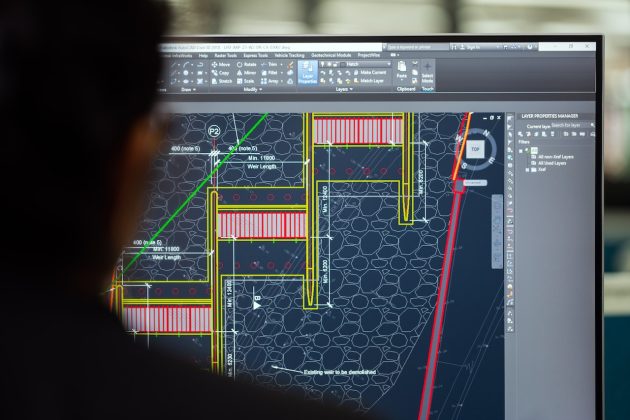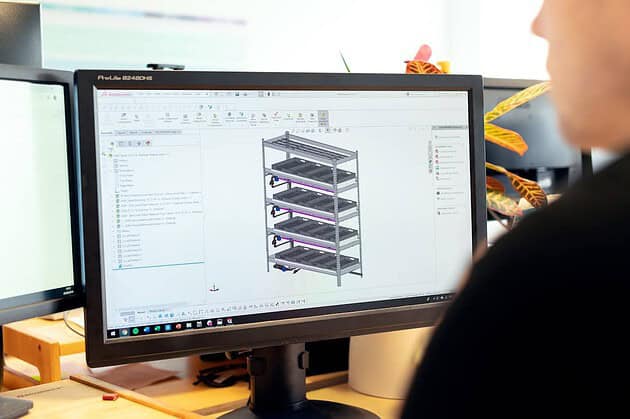In today’s fast-paced world, where innovation is the key to staying ahead, the design process has become increasingly critical across industries. Whether you’re crafting the latest consumer electronics, designing architectural marvels, or engineering cutting-edge automobiles, Computer-Aided Design (CAD) plays a pivotal role in bringing ideas to life. Among the leading pioneers in this field, Dassault Systèmes offers a revolutionary approach through its Cloud CAD solution. In this article, we’ll explore how Dassault Systèmes Cloud CAD is transforming design processes and compare it to the traditional CAD systems that have been the foundation of industry innovation for decades.

The Evolution of CAD
The journey of CAD is nothing short of remarkable. From its humble beginnings as 2D drafting tools to today’s complex 3D modeling software, CAD has continuously evolved. This evolution has reshaped industries, enabling engineers and designers to visualize, simulate, and optimize their ideas in ways that were once unimaginable.
Traditional CAD: A Foundation
Traditional CAD systems have long served as the backbone of design and engineering. They provide a solid platform for creating detailed 3D models, allowing engineers to analyze and refine their designs meticulously. The reliability and precision of traditional CAD software have been instrumental in the development of countless products and structures.
However, traditional CAD systems do come with their set of challenges. They often require high-performance hardware, limiting accessibility for remote teams. Additionally, the cost of licenses and hardware can be substantial.
Cloud CAD: A Game-Changer
Enter Dassault Systèmes Cloud CAD, a game-changer in the world of design. This innovative solution harnesses the power of the cloud to provide a versatile and accessible platform for design and collaboration. With Cloud CAD, designers can create, modify, and share 3D models in real-time from virtually anywhere with an internet connection.
The shift to cloud-based CAD brings numerous advantages. It enables real-time collaboration among global teams, eliminating geographical barriers. Team members can work concurrently on the same project, significantly reducing project timelines. Moreover, Cloud CAD offers scalability and flexibility, allowing companies to adapt their CAD infrastructure to meet changing demands without significant investments in hardware.
Key Differences
Let’s delve into the key differences between traditional CAD and Dassault Systèmes Cloud CAD:
Accessibility: Traditional CAD often requires high-end workstations, limiting access to on-site designers. In contrast, Cloud CAD provides remote access via web browsers, enabling collaboration from anywhere.
Collaboration: Cloud CAD fosters real-time collaboration, allowing multiple users to work simultaneously on a design. Traditional CAD often necessitates file sharing and version control challenges.
Scalability: Cloud CAD offers scalability, making it easy to accommodate growing project demands. Traditional CAD systems may require significant hardware upgrades for the same purpose.

Advantages of Cloud CAD
The advantages of adopting cloud-based CAD extend beyond accessibility and collaboration. It offers scalability and flexibility, allowing companies to adapt their CAD infrastructure to meet changing demands without significant investments in hardware. According to a recent study by Engineering.com, engineering and design software vendors are embracing cloud technology to improve collaboration and efficiency in the design process. This shift to cloud-based CAD solutions aligns with the benefits we’ve discussed, such as real-time collaboration and reduced project timelines.
With Cloud CAD, designers benefit from automatic software updates, reducing maintenance efforts. Additionally, the cloud’s computational power can handle complex simulations and renderings more efficiently. This results in faster design iterations and better decision-making.
Challenges and Considerations
While the benefits of Cloud CAD are evident, it’s essential to consider potential challenges. Data security is a critical concern, and companies must implement robust security measures to protect sensitive design data. Reliable internet connectivity is another factor to ensure uninterrupted work in the cloud.
Real-World Applications
Cloud CAD is already making waves in various industries. Companies like SpaceX and Airbus have embraced Dassault Systèmes Cloud CAD to streamline their design processes. By doing so, they have experienced enhanced collaboration, accelerated innovation, and improved design outcomes.
In the evolving landscape of design and engineering, Dassault Systèmes Cloud CAD stands as a formidable force, reshaping the way we approach CAD. While traditional CAD systems have been the bedrock of design for decades, the cloud-based alternative introduces a new era of accessibility, collaboration, and efficiency. As we move forward, the choice between traditional CAD and Cloud CAD will likely become a defining factor in an organization’s ability to innovate and remain competitive. Explore the possibilities, embrace the revolution, and stay at the forefront of design with Dassault Systèmes Cloud CAD.
















